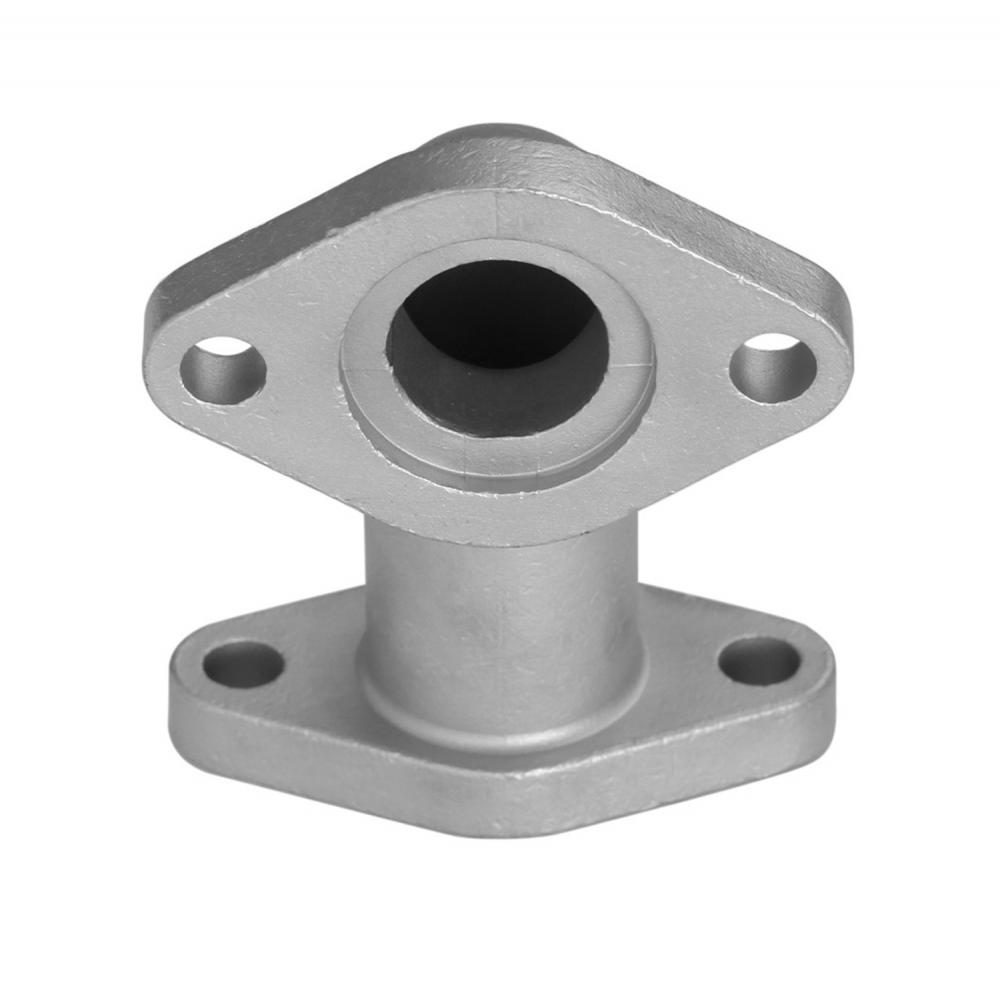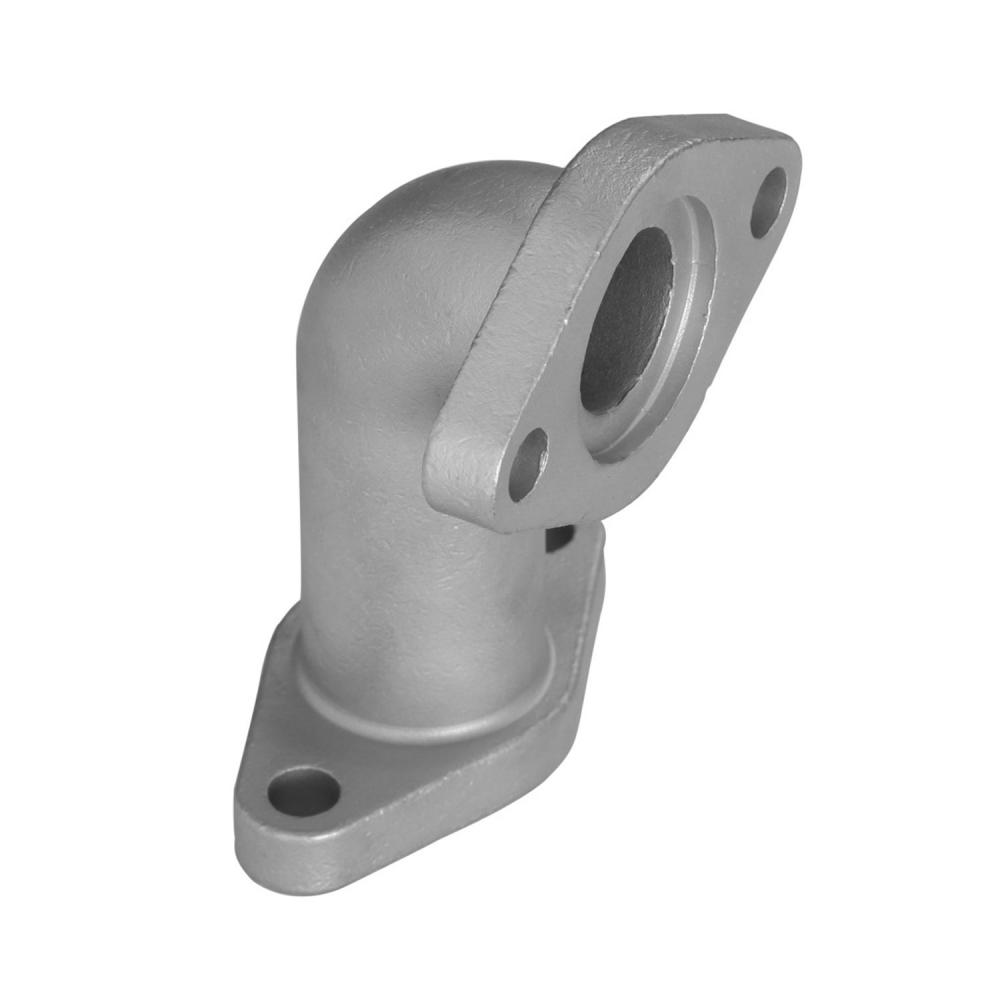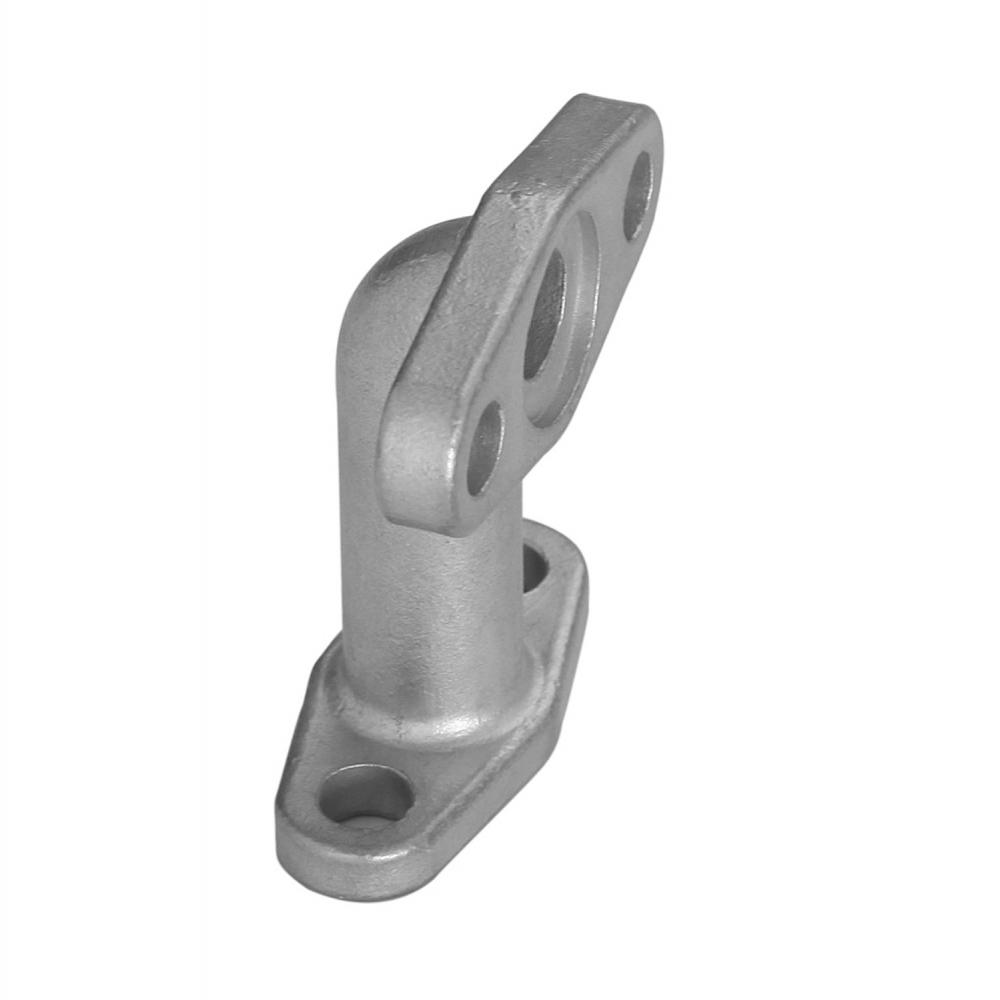Industry Trends in Advanced Casting Technologies
The global demand for high-performance industrial components continues to drive innovation in manufacturing. A critical area of this evolution is in the production of precision casting parts. Modern industries, from aerospace to medical, require components with intricate geometries, superior material integrity, and tight dimensional tolerances, often at competitive costs. Key trends indicate a growing reliance on advanced casting methods like lost wax casting (investment casting) for metals such as stainless steel, which offers unparalleled precision and surface finish.
Automation and digital simulation are profoundly impacting the casting industry, optimizing process parameters, reducing material waste, and accelerating prototyping cycles. Furthermore, the increasing adoption of sustainable manufacturing practices emphasizes energy efficiency, material recycling, and reduced environmental footprints, pushing foundries to invest in cleaner technologies. The rise of specialized alloys and composite materials also necessitates more sophisticated casting techniques to handle complex material properties and achieve desired performance characteristics. We are seeing a significant shift towards integrated supply chains where design, manufacturing, and quality control are seamlessly interconnected.

While traditional methods like sand casting for iron casting remain vital for high-volume, less critical components, the demand for precision, especially in applications requiring high corrosion resistance and strength, strongly favors investment casting. Innovations in rapid prototyping, such as 3D printing of wax patterns, are also shortening lead times and expanding design possibilities for complex casting parts, making customized solutions more accessible than ever. This dynamic environment places a premium on manufacturers who can combine technical expertise with flexible, customer-centric approaches.
Detailed Process Flow: OEM Stainless Steel Lost Wax Casting
The production of an OEM Stainless Steel casting part through the lost wax casting (investment casting) process is a sophisticated multi-stage operation renowned for its ability to produce highly intricate components with excellent surface finish and dimensional accuracy. This method is particularly suited for high-alloy metals like stainless steel due to its precision and material integrity.
Manufacturing Process Steps:
- Pattern Creation: A master pattern, typically made from wax, is injected into a precision die. Multiple wax patterns are then assembled onto a central wax sprue to form a “tree.”
- Shell Building: The wax tree is repeatedly dipped into ceramic slurry and then coated with refractory sand. This process is iterated multiple times, allowing each layer to dry, to build a robust ceramic shell around the wax pattern. This shell will become the mold.
- Dewaxing: The ceramic shell, with the wax pattern inside, is heated in an autoclave. The wax melts and drains out, leaving a hollow ceramic mold. This “lost wax” step is where the process gets its name.
- Preheating and Pouring: The ceramic mold is preheated to extremely high temperatures (typically 900-1100°C) to remove residual moisture and improve mold strength. Molten stainless steel, precisely alloyed (e.g., 304, 316, 17-4PH), is then poured into the hot mold cavity.
- Cooling: The molten metal solidifies within the mold, taking the shape of the desired component.
- De-shelling: Once cooled, the ceramic shell is mechanically removed (e.g., by vibration or blasting) to reveal the metal casting tree.
- Cut-off and Finishing: Individual casting parts are cut from the sprue. Gates and risers are removed, and subsequent finishing operations such as grinding, shot blasting, and polishing are performed to meet surface finish specifications.
- Heat Treatment: Depending on the required mechanical properties, parts may undergo heat treatment (e.g., annealing, normalizing, hardening, tempering) to optimize strength, ductility, and hardness.
- Machining (Optional): For very tight tolerances or complex features not achievable by casting alone, CNC machining is employed for precise finishing.
- Quality Inspection: Each casting part undergoes rigorous quality control, including dimensional inspection, material composition analysis (Spectrometer), mechanical property testing (tensile, hardness), non-destructive testing (NDT) like X-ray, ultrasonic, or magnetic particle inspection, and surface finish checks.

Materials and Standards:
- Materials: Typically high-grade stainless steels such as ASTM A351 CF8 (304), CF8M (316), CF3M (316L), CD4MCu, and precipitation hardening steels like 17-4PH (CA6NM). Other alloys like brass casting for specific applications are also common.
- Manufacturing Processes: Lost wax casting (Investment Casting), with potential follow-up CNC machining, heat treatment, and surface finishing.
- Testing Standards: Adherence to international standards like ISO 9001 (Quality Management), ASTM (American Society for Testing and Materials) for material specifications and testing methods, ANSI (American National Standards Institute) for dimensions and tolerances, and NDT standards like ASTM E186 for X-ray or ASTM E709 for magnetic particle inspection.
- Service Life: Dependent on material selection, application environment, and proper maintenance, but precision stainless steel castings are designed for long operational lives, often exceeding 15-20 years in demanding industrial settings due to their inherent corrosion and wear resistance.
Technical Specifications and Parameters
Our OEM Stainless Steel Lost Wax Castings are engineered to meet stringent technical specifications required by various industrial sectors. Below are typical parameters for a standard 316L stainless steel casting part, renowned for its superior corrosion resistance, especially in chloride environments.
Typical Product Specifications (ASTM A351 CF3M / 316L Stainless Steel):
| Parameter | Value/Description |
|---|---|
| Material Grade | ASTM A351 CF3M (Equivalent to 316L Stainless Steel) |
| Tensile Strength | Min. 485 MPa (70 ksi) |
| Yield Strength (0.2% Offset) | Min. 170 MPa (25 ksi) |
| Elongation (in 2 in.) | Min. 30% |
| Hardness (Brinell) | Max. 187 HBW |
| Dimensional Tolerance | ISO 8062-3 CT5-CT7 (depending on feature size) |
| Surface Finish | Ra 3.2 – 6.3 µm (as-cast), lower with polishing |
| Max Part Weight | Up to 50 kg (depending on complexity) |
| Wall Thickness | Min. 2.5 mm (dependent on design) |
| Heat Treatment | Solution Annealed (standard) |
Application Scenarios & Target Industries
Precision stainless steel casting parts produced via lost wax casting are indispensable across a multitude of demanding industries. Their exceptional mechanical properties, combined with superior corrosion resistance and the ability to achieve complex geometries, make them ideal for critical components.
- Petrochemical Industry: Components for valves, pumps, flanges, and fittings that operate in corrosive chemical environments, high temperatures, and under high pressure. Stainless steel offers excellent resistance to various acids, alkalis, and chlorides, ensuring long service life and reducing downtime.
- Metallurgy and Mining: Wear-resistant parts for crushing, grinding, and material handling equipment, often exposed to abrasive slurries and harsh conditions. Stainless steel castings provide durability and extend the lifespan of machinery.
- Water Supply & Drainage Systems: Impellers, pump casings, valve bodies, and various pipe fittings that require excellent corrosion resistance against treated and untreated water, sludge, and environmental elements. The smooth surface finish of investment castings can also improve flow dynamics, contributing to energy saving.
- Automotive & Transportation: Intricate engine components, exhaust system parts, and structural elements where high strength-to-weight ratio and resistance to thermal cycles are crucial.
- Medical & Pharmaceutical: Surgical instruments, prosthetic components, and critical equipment housings that demand biocompatibility, high sterility, and precise dimensions.
- Food & Beverage: Sanitary fittings, pump parts, and processing equipment components that require hygienic, non-corrosive, and easily cleanable surfaces.
- Aerospace & Defense: Lightweight, high-strength parts for aircraft structures, engine components, and military equipment, where reliability and performance under extreme conditions are paramount.

Technical Advantages of Lost Wax Casting
The lost wax casting process offers several distinct technical advantages, particularly when producing complex stainless steel components:
- High Dimensional Accuracy: Enables the production of parts with tight tolerances, often reducing or eliminating the need for extensive secondary machining. This translates to cost savings and faster production.
- Excellent Surface Finish: Investment castings typically achieve a superior surface finish (Ra 3.2-6.3 µm as-cast) compared to other casting methods, requiring less post-processing.
- Complex Geometries: Ideal for producing intricate designs, thin walls, and internal features that would be challenging or impossible with other manufacturing techniques. This design freedom allows for optimized part performance and consolidation of multiple components into a single casting part.
- Wide Material Selection: Compatible with a broad range of ferrous and non-ferrous alloys, including various grades of stainless steel, carbon steel, alloy steel, and even more specialized materials like superalloys or brass casting alloys.
- Cost-Effective for Medium to High Volumes: While tooling costs for wax injection dies can be higher initially, the per-part cost becomes very competitive for medium to high production volumes due to reduced machining, material waste, and labor.
- Superior Material Integrity: Produces components with fine grain structure and minimal porosity, leading to enhanced mechanical properties and reliability. This is crucial for applications demanding high strength and fatigue resistance.
- Reduced Waste: The “lost wax” process uses reclaimable wax and minimizes material loss during the casting phase compared to subtractive manufacturing.
Specific Advantages in Typical Application Scenarios:
- Energy Saving: In pump and valve applications, the excellent surface finish and precise internal geometries achieved by lost wax casting reduce flow resistance, leading to improved hydraulic efficiency and significant energy savings over the operational life of the equipment.
- Corrosion Resistance: Utilizing specific stainless steel grades (e.g., 316L) ensures superior resistance to chemical attack, pitting, and crevice corrosion, extending the lifespan of components in harsh environments and reducing maintenance costs. This is particularly vital in marine, chemical processing, and wastewater treatment applications.
Vendor Comparison: Casting Technologies
Selecting the appropriate casting method and vendor is crucial for project success. Different casting technologies offer varying benefits regarding cost, precision, material compatibility, and production volume. Here’s a comparison emphasizing the strengths of lost wax casting for high-quality casting parts.
Comparison of Casting Methods:
| Feature | Lost Wax Casting (Investment Casting) | Sand Casting (e.g., for iron casting) | Die Casting (e.g., for Aluminum/Zinc) | Foam Casting (Lost Foam Casting) |
|---|---|---|---|---|
| Dimensional Accuracy | Excellent (CT5-CT7) | Good to Fair (CT10-CT13) | Very Good (CT4-CT6) | Good (CT8-CT9) |
| Surface Finish (Ra) | Very Good (3.2-6.3 µm) | Poor to Fair (12.5-25 µm) | Excellent (0.8-3.2 µm) | Fair to Good (6.3-12.5 µm) |
| Complexity of Parts | Very High | Moderate | Moderate to High | High |
| Material Compatibility | Broad (Ferrous, Non-ferrous, Superalloys) | Broad (Iron, Steel, Aluminum, Brass) | Limited (Aluminum, Zinc, Magnesium) | Broad (Iron, Steel, Aluminum) |
| Tooling Cost | High (for wax dies) | Low to Moderate | Very High | Moderate |
| Production Volume Suitability | Medium to High | Low to Very High | Very High | Medium to High |
While other methods like sand casting are economical for simpler, large components (e.g., large industrial iron casting), and die casting excels in mass production of non-ferrous parts with specific design constraints, lost wax casting offers the optimal balance of precision, complexity, and material versatility for high-performance stainless steel components. For projects requiring high integrity and minimal post-processing, especially for intricate designs, investment casting remains the superior choice. This is also where foam casting can be an alternative, though it generally offers less precision than lost wax.
Customized Solutions & Expertise
At Mingda Metals, our expertise in OEM Stainless Steel Lost Wax Casting allows us to provide highly customized solutions tailored to specific client needs. We understand that standard components often don’t meet the unique requirements of advanced industrial applications. Our team of metallurgical engineers and casting specialists works closely with clients from concept to final product, ensuring optimal design for manufacturability (DFM) and performance.

- Design Optimization: Utilizing advanced CAD/CAM software and simulation tools to refine part geometries, reduce stress concentrations, and improve casting yield.
- Material Selection Guidance: Advising on the best stainless steel alloy or other materials (e.g., specialized brass casting alloys) for specific environmental conditions and mechanical properties.
- Prototyping & Tooling: Rapid prototyping capabilities, including 3D printing of wax patterns for initial samples, significantly reduce development time and costs. We also specialize in precision tooling design and fabrication.
- Secondary Operations: Offering comprehensive post-casting services, including CNC machining, heat treatment, surface finishing (polishing, electropolishing, passivation), and assembly to deliver ready-to-use components.
Our 15+ years of experience in the casting industry, coupled with adherence to ISO 9001:2015 standards, positions us as an authoritative partner for complex OEM projects. We have successfully collaborated with major clients in the petrochemical, food & beverage, and heavy machinery sectors, delivering millions of high-quality casting parts globally.
Application Case Studies
Case Study 1: High-Pressure Valve Components for Offshore Oil & Gas
A leading offshore drilling equipment manufacturer approached us for complex valve bodies and internal components requiring exceptional corrosion resistance and high-pressure integrity. The challenge involved intricate internal passages and tight dimensional tolerances in a highly corrosive saltwater environment. We developed a customized solution using ASTM A351 CD4MCu stainless steel, cast via the lost wax process.
- Solution: Precision lost wax casting of CD4MCu components, followed by solution annealing and extensive NDT (Radiographic Testing, Ultrasonic Testing) to ensure zero internal defects and complete material integrity.
- Results: Delivered components with superior mechanical strength (tensile strength > 700 MPa) and unparalleled resistance to chloride-induced pitting and crevice corrosion, significantly extending the service life of their valve assemblies from 5 years to over 12 years. Customer feedback highlighted the exceptional quality and consistency.
Case Study 2: Sanitary Pump Impellers for Food Processing
A major food and beverage equipment producer required highly polished, hygienically compliant pump impellers for their dairy processing lines. The impellers needed precise blade profiles for efficient flow, a smooth surface finish to prevent bacterial growth, and excellent corrosion resistance to cleaning agents.
- Solution: Utilized lost wax casting with ASTM A351 CF3M (316L Stainless Steel) to produce the impellers. The casting process allowed for the intricate blade geometry, followed by precision CNC machining of critical interfaces and a multi-stage electropolishing process to achieve an ultra-smooth (Ra < 0.8 µm) sanitary finish.
- Results: The impellers demonstrated 15% improved hydraulic efficiency, contributing to energy saving for the client. The superior surface finish drastically reduced cleaning times and ensured compliance with FDA sanitary standards, leading to a 20% reduction in operational costs related to cleaning and maintenance.

Trustworthiness: FAQ, Lead Time, Warranty & Support
Frequently Asked Questions (FAQ)
-
Q: What is the minimum order quantity (MOQ) for an OEM casting part?
A: Our MOQ is generally 100-200 units, depending on the complexity and size of the part. We can discuss specific project requirements for lower volumes during consultation. -
Q: Can you work with custom alloy specifications?
A: Yes, we frequently cast with custom alloy formulations provided by clients, after thorough metallurgical analysis and testing to ensure manufacturability and performance. -
Q: What inspection and testing processes do you employ?
A: We employ a full suite of quality control measures, including material chemical analysis (Spectrometer), mechanical testing (tensile, hardness, impact), dimensional inspection (CMM), NDT (X-ray, MPI, UT), and visual inspections, all in accordance with international standards.
Lead Time & Fulfillment Details
Typical lead times for OEM Stainless Steel Lost Wax Castings are as follows:
- Tooling Development: 4-6 weeks (for new wax injection dies).
- First Article Samples (FAS): 3-4 weeks after tooling completion.
- Mass Production: 4-8 weeks from sample approval, depending on order volume and complexity.
We offer flexible shipping options, including FOB, CIF, and DDU, to accommodate global logistics requirements. All shipments are meticulously packaged to prevent damage during transit.
Warranty Commitments & Customer Support
Mingda Metals stands behind the quality of every casting part we produce. We offer a standard 12-month warranty against manufacturing defects from the date of delivery. Our commitment extends to providing comprehensive after-sales support:
- Dedicated Account Management: Each client is assigned a dedicated account manager for streamlined communication and project oversight.
- Technical Assistance: Our engineering team is available for technical consultations, troubleshooting, and continuous improvement suggestions.
- Quality Assurance: Any non-conformance issues are addressed promptly and thoroughly through our established corrective and preventive action (CAPA) procedures, ensuring customer satisfaction.
References
- ASM International. (2008). ASM Handbook Volume 15: Casting. ASM International.
- Campbell, J. (2003). Castings Practice: The 10 Rules of Castings. Butterworth-Heinemann.
- ISO 9001:2015 – Quality management systems – Requirements. International Organization for Standardization.
- ASTM International. (Various standards: A351, E186, E709).
- Dantzig, J. A., & Rappaz, M. (2009). Solidification. EPFL Press.
Hebei Mingda International Trading Company is a trading company which is specialized in castings, ODM Ductile Iron Manhole Cover forgings and machinery parts.Our products include all kinds of raw castings to be made of ductile iron , grey iron , brass , stainless steel and aluminums, machined castings and forged parts .ODM Ductile Iron Covers To make these parts according to the customers’Custom Iron Casting drawings , we have relative suitable production craft and equipments, such as resin sand , sand mould , hot core boxes , lost-wax , lost –foam and so on Iron Casting Manufacturer Custom.Specially for hydrant bodies and valves’Ductile Iron Manhole Cover Manufacturer bodies, we have collected rich experience for these products in the past 16 year’s actual production, Now we are proud of our products with good surface and high quality material. Iron Casting ManufacturerWhatever,we have been trying our best to provide our customers with better quality castings by improving production crafts and more careful quality control.Cast Iron Castings Manufacturer|super blog